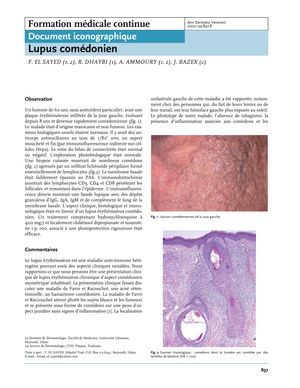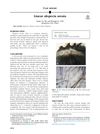Comedonal Lupus: A Case Study of a 60-Year-Old Moroccan Man
November 2007
in “
Annales de Dermatologie et de Vénéréologie
”
hydroxychloroquine clobetasol dipropionate tazarotene photoprotection lupus erythematosus chronic cutaneous lupus erythematosus lichen planus antibodies CD3 CD4 CD8 IgG IgA IgM complement basement membrane immunohistochemistry direct immunofluorescence Plaquenil Clobex Tazorac sun protection lupus skin lupus lichen T-cells T-helper cells cytotoxic T-cells immunoglobulin G immunoglobulin A immunoglobulin M immune system proteins skin biopsy DIF

TLDR A man was diagnosed with a rare form of lupus after showing unique skin symptoms that responded well to treatment.
In the 2007 case study, a 60-year-old Moroccan man with no significant medical history presented with an erythematous, infiltrated plaque on his left cheek that had evolved over 8 years and had become comedonian. Biological exams were normal except for antinuclear antibodies at a titer of 1/80 with a speckled and fine pattern. Connective tissue disease tests were otherwise normal or negative. A skin biopsy revealed numerous comedones attacked by a lichenoid peripilar infiltrate primarily composed of lymphocytes, with a slightly thickened basement membrane. Immunohistochemistry showed CD3, CD4, and CD8 lymphocytes penetrating the follicles and moving up into the epidermis. Direct immunofluorescence showed lupus band with granular deposits of IgG, IgA, IgM, and complement along the basement membrane. The clinical, histological, and immunological aspects supported a diagnosis of comedonal lupus erythematosus. Treatment with 400 mg/day hydroxychloroquine, topical clobetasol dipropionate, tazarotene 1%, and rigorous photoprotection was effective. The case was reported as an unusual asymmetric comedonal presentation of chronic cutaneous lupus erythematosus, differentiated from diseases like Favre-Racouchot by the absence of smoking, presence of inflammation with comedones, and supportive biological and immunological findings. Comedonal lupus was suggested as a clinical variant of chronic lupus erythematosus with distinct characteristics from other subtypes.


